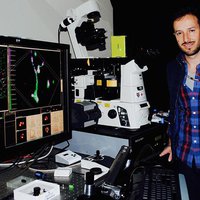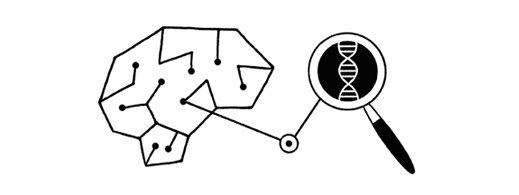Biotechnology & medicine
Gilad Evrony
Single-neuron genome sequencing is revealing clues about what goes wrong in the brain.
Illustration by Miguel Porlan

Latin America
Santiago Reyes
Cellular reprogramming and genetic engineering techniques that allow scientists to create new tools capable of predicting the risk of heart failure

Latin America
Maier Steve Avendaño
His high definition, fluorescent microscopy techniques can be used to observe molecules separated by a mere five nanometers

Europe
Romain Lacombe
The first personal and wearable sensor to measure indoor and outdoor air pollutants

Global
Elizabeth Mormino
A telltale protein seen in people’s brains before they have Alzheimer’s could offer a clue about possible treatments.

